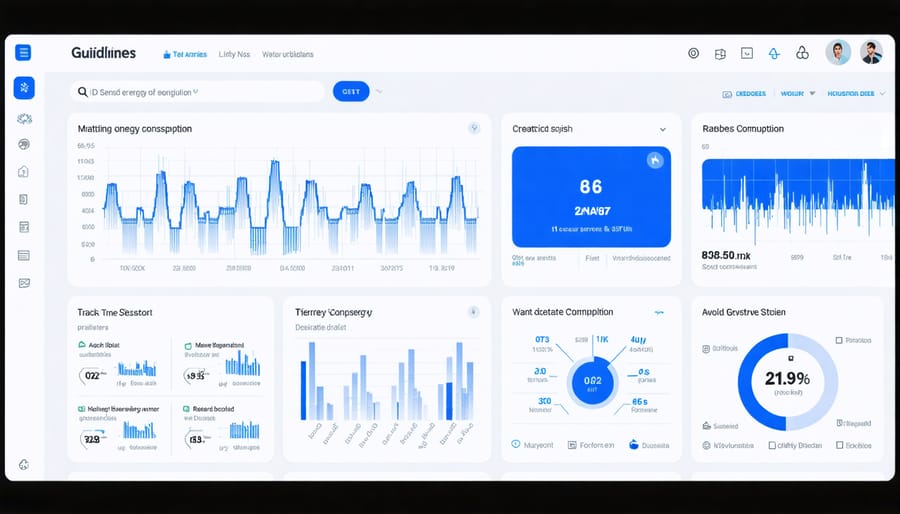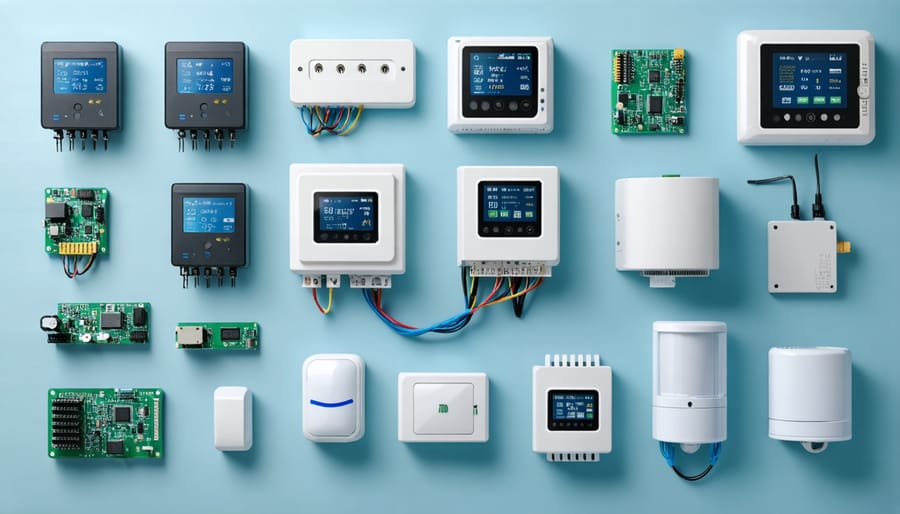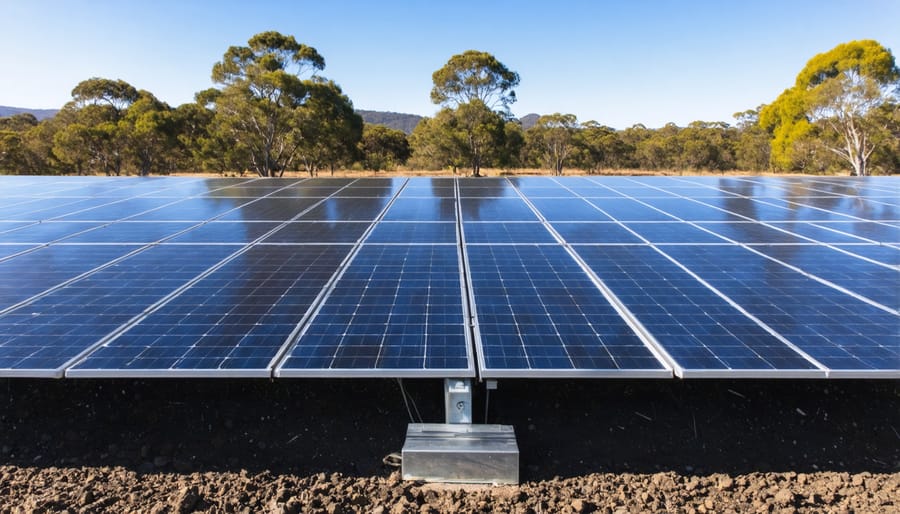Transform your business operations with IoT integration – the groundbreaking fusion of physical devices, smart sensors, and data analytics that’s revolutionizing how Australian organizations monitor, manage, and optimize their resources. From remote industrial facilities in the Outback to sophisticated urban infrastructure networks, IoT integration enables real-time decision-making, predictive maintenance, and unprecedented operational efficiency.
Today’s interconnected ecosystem demands more than standalone smart devices; it requires a seamless framework where sensors, systems, and software work in harmony to deliver actionable insights. Leading Australian enterprises are already leveraging IoT integration to reduce energy consumption by up to 30%, slash maintenance costs, and drive sustainable business practices that align with our nation’s renewable energy targets.
As we stand at the intersection of digital transformation and environmental responsibility, IoT integration emerges as the crucial bridge connecting traditional infrastructure with the intelligent, sustainable future. Whether you’re a facility manager seeking to optimize energy usage, a manufacturer aiming to streamline operations, or a sustainability leader driving green initiatives, understanding IoT integration isn’t just beneficial – it’s essential for staying competitive in our increasingly connected world.
The Power of IoT in Energy Management
Real-Time Energy Tracking
IoT sensors act as the digital nervous system of modern energy monitoring, providing real-time insights into power consumption patterns across homes, businesses, and industrial facilities. These smart devices capture data at multiple points throughout an energy network, measuring everything from voltage and current flow to temperature and equipment performance.
In a typical setup, wireless sensors installed at key consumption points continuously collect data, which is then transmitted via secure networks to central management systems. This happens in milliseconds, allowing for immediate response to usage spikes or equipment inefficiencies. For instance, smart meters in Australian households now send updates every 30 minutes, enabling precise tracking of daily energy patterns.
The beauty of IoT-enabled tracking lies in its ability to transform raw data into actionable insights. Modern systems can detect unusual consumption patterns, predict maintenance needs, and automatically adjust settings for optimal efficiency. A manufacturing plant in Melbourne recently reduced its energy costs by 25% after implementing IoT sensors that identified and eliminated energy waste in their production line.
These systems also empower consumers by providing easy-to-understand visualizations through smartphone apps and web dashboards, making energy management more accessible and engaging for everyone.

Smart Analytics and Reporting
Modern IoT integration platforms transform raw data into actionable intelligence through sophisticated analytics capabilities. By leveraging AI-powered predictive analytics, these systems help facility managers and energy providers make informed decisions about resource allocation and system optimization.
Real-time dashboards provide comprehensive visibility into energy consumption patterns, enabling quick identification of usage anomalies and opportunities for efficiency improvements. For instance, Australian businesses using smart analytics have reported energy savings of up to 30% through early detection of equipment inefficiencies and optimization of peak load periods.
The reporting functionality goes beyond basic energy monitoring, offering detailed insights into carbon footprint reduction, cost savings, and system performance metrics. Custom alerts and automated reports keep stakeholders informed about critical parameters, while intuitive visualization tools make complex data easily digestible for decision-makers at all levels.
These analytics capabilities are particularly valuable for renewable energy integration, helping balance supply and demand while maximizing the use of clean energy sources. The system’s ability to learn from historical data ensures continuous improvement in energy management strategies, making it an essential tool for Australia’s sustainable energy future.
Implementing IoT Energy Monitoring
Essential Hardware Components
The backbone of any successful IoT integration lies in selecting and implementing the right hardware components. At the heart of smart energy monitoring systems are sensors and meters that capture real-time data about energy consumption, production, and environmental conditions. These include smart power meters that track electricity usage down to individual circuits, current transformers (CTs) that monitor power flow, and environmental sensors that measure temperature, humidity, and light levels.
Communication devices form the crucial link between these sensors and your monitoring system. Gateway devices, which often use protocols like Zigbee or Z-Wave, create a secure network for data transmission. These gateways collect information from various sensors and transmit it to cloud servers or local monitoring systems through Wi-Fi, cellular, or ethernet connections.
For solar installations, essential components include solar monitoring devices that track panel performance, inverter efficiency, and energy production. Weather stations can complement these systems by providing local climate data that helps predict energy generation patterns.
Data loggers and controllers serve as the system’s brain, processing incoming information and executing automated responses. These devices should be robust enough to handle Australian conditions, from the heat of the Northern Territory to the coastal humidity of Queensland.
When selecting hardware, it’s crucial to choose components that are compatible with your existing infrastructure and future expansion plans. Look for devices with proven reliability, local support, and compliance with Australian standards. Many successful installations use a mix of established brands and innovative local solutions, ensuring both reliability and adaptability to unique Australian energy needs.

Software and Integration Solutions
Modern IoT integration relies heavily on sophisticated monitoring platforms that seamlessly connect various devices and systems. Leading Australian energy management solutions now offer comprehensive dashboards that provide real-time insights into energy consumption, generation, and storage patterns. These platforms typically feature user-friendly interfaces that make complex data easily digestible for both facility managers and homeowners.
Integration options have expanded significantly, with many systems supporting popular protocols like MQTT, HTTP/REST, and WebSocket connections. This flexibility allows organizations to choose solutions that best match their existing infrastructure while ensuring future scalability. Many platforms also support blockchain energy trading platforms, enabling secure and transparent energy exchange within local communities.
Cloud-based solutions have become increasingly popular, offering advantages like automatic updates, remote access, and robust data backup. Leading Australian providers now offer hybrid solutions that combine local processing with cloud capabilities, ensuring system reliability even during internet outages.
For businesses just starting their IoT journey, many vendors provide modular solutions that allow for gradual implementation. These systems can begin with basic energy monitoring and expand to include advanced features like predictive maintenance and automated demand response as needs evolve.
Security remains a top priority, with most platforms incorporating end-to-end encryption, regular security audits, and compliance with Australian data protection standards. This comprehensive approach to security helps organizations maintain the integrity of their energy data while protecting sensitive operational information.
Benefits for Australian Businesses
Cost Savings and ROI
Implementing IoT integration in energy systems delivers substantial financial returns through multiple channels. Australian businesses implementing smart monitoring solutions typically see a 15-30% reduction in energy costs within the first year. These savings come from real-time consumption tracking, automated optimization, and enhanced smart grid maintenance.
A compelling example is the Sydney Metro Commercial Centre, which achieved a $450,000 annual reduction in energy costs after implementing IoT sensors and smart monitoring systems. The initial investment of $1.2 million was recovered in less than three years, demonstrating a robust ROI of approximately 37%.
Beyond direct energy savings, IoT integration reduces maintenance costs by up to 25% through predictive maintenance and early fault detection. Organizations report significant decreases in equipment downtime and extended asset lifespans, contributing to long-term cost benefits.
The financial advantages extend to carbon credit opportunities and government incentives. Many Australian businesses have accessed green technology grants and environmental credits, further improving their ROI. For instance, Queensland manufacturing facilities utilizing IoT-enabled energy management systems have qualified for sustainability grants worth up to $75,000.
Factoring in reduced operational costs, extended equipment life, and available incentives, most organizations achieve complete ROI within 24-36 months. This makes IoT integration not just an environmental choice, but a smart business decision with clear financial benefits.
Environmental Impact
IoT integration plays a pivotal role in reducing environmental impact across Australian industries through smart monitoring and efficient resource management. By implementing clean energy management solutions, organisations can significantly decrease their carbon footprint while optimising operations.
Real-time monitoring through IoT sensors enables businesses to track and reduce energy consumption patterns, leading to an average reduction of 15-30% in energy usage. Smart buildings equipped with IoT systems automatically adjust lighting, heating, and cooling based on occupancy and environmental conditions, minimising unnecessary energy expenditure.
In the agricultural sector, IoT integration helps farmers implement precision farming techniques, reducing water waste and optimising fertiliser use. These smart systems can cut water consumption by up to 30% while maintaining or improving crop yields.
Manufacturing facilities using IoT-enabled equipment can detect and prevent energy waste, with some Australian manufacturers reporting up to 25% reduction in energy costs. The technology also supports predictive maintenance, extending equipment life and reducing electronic waste.
Perhaps most importantly, IoT integration facilitates the transition to renewable energy by enabling smart grid management and efficient energy storage solutions. This technology helps balance power supply and demand, making renewable energy sources more viable and reliable for everyday use.
By embracing IoT solutions, Australian businesses are not just cutting costs – they’re actively contributing to a more sustainable future while meeting growing environmental regulations and consumer expectations.
Success Stories

Agricultural Applications
In the heart of Victoria’s farming region, the Smith Family Farm has revolutionized their agricultural operations through IoT integration, serving as a brilliant example of smart energy monitoring in action. Their 500-hectare property now operates with a network of interconnected sensors and devices that monitor everything from soil moisture to equipment energy consumption.
The farm implemented IoT sensors across their irrigation systems, greenhouse climate controls, and machinery in 2021. These devices communicate with a central management system, providing real-time data on energy usage patterns and identifying opportunities for optimization. The results have been remarkable: a 35% reduction in energy consumption and a 40% decrease in water usage within the first year.
Key to their success was the strategic placement of smart meters on major equipment, including irrigation pumps and cold storage facilities. These meters track power consumption patterns and automatically adjust operations based on peak usage times and weather conditions. For instance, the system shifts intensive irrigation to off-peak hours and optimizes greenhouse temperature control based on weather forecasts.
The farm’s success has inspired neighboring properties to adopt similar technologies. The local agricultural cooperative now estimates that widespread adoption of IoT-based energy monitoring could save the region’s farming community millions in energy costs annually while significantly reducing their environmental impact. This case study demonstrates how IoT integration can transform traditional farming into a more sustainable and energy-efficient operation.
Industrial Implementation
A remarkable success story of IoT integration comes from the Smithfield Manufacturing Plant in Western Sydney, where smart energy monitoring transformed their operations. The facility implemented a comprehensive IoT system in 2021, connecting over 200 sensors across their production lines to monitor energy consumption in real-time.
The system identified that their cooling units were consuming 40% more energy than necessary during off-peak hours. By implementing automated controls and smart scheduling, the facility reduced its energy consumption by 28% within the first six months. The IoT sensors also detected equipment inefficiencies before they led to major breakdowns, preventing costly production interruptions.
Data analytics revealed patterns in energy usage that weren’t visible before. The facility managers could see exactly how each production line contributed to their overall energy footprint. This insight led to the development of more efficient production schedules, with energy-intensive processes shifted to times when renewable energy was most abundant on the grid.
The return on investment was achieved in just 14 months, well ahead of the projected two-year timeline. Beyond the financial benefits, the facility reduced its carbon emissions by 450 tonnes annually, equivalent to taking 98 cars off the road. This success has inspired other manufacturers in the region to explore similar IoT solutions, creating a ripple effect of sustainable industrial practices across New South Wales.
The integration of IoT technology in energy monitoring represents a transformative step towards a more sustainable and efficient future for Australia. By embracing these smart solutions, businesses and households can achieve substantial energy savings while contributing to our nation’s environmental goals. The real-time insights and automated control capabilities offered by IoT systems have proven to reduce energy consumption by up to 30% in many cases, making it a compelling investment for forward-thinking organizations.
The success stories we’ve explored demonstrate that IoT energy monitoring is more than just a technological advancement – it’s a practical solution to pressing environmental challenges. From small businesses in Melbourne achieving significant cost reductions to large industrial facilities in Perth optimizing their operations, the benefits are clear and measurable.
As we move towards a more sustainable future, the role of IoT in energy management will only grow in importance. The technology’s ability to integrate with existing systems, provide actionable insights, and facilitate informed decision-making makes it an essential tool for any organization serious about reducing its environmental impact.
For those considering implementing IoT energy monitoring solutions, the time to act is now. With increasing government support, improving technology, and growing expertise in the field, there has never been a better opportunity to embrace this game-changing technology. By taking this step, you’re not just investing in your organization’s future – you’re contributing to a greener, more sustainable Australia.

